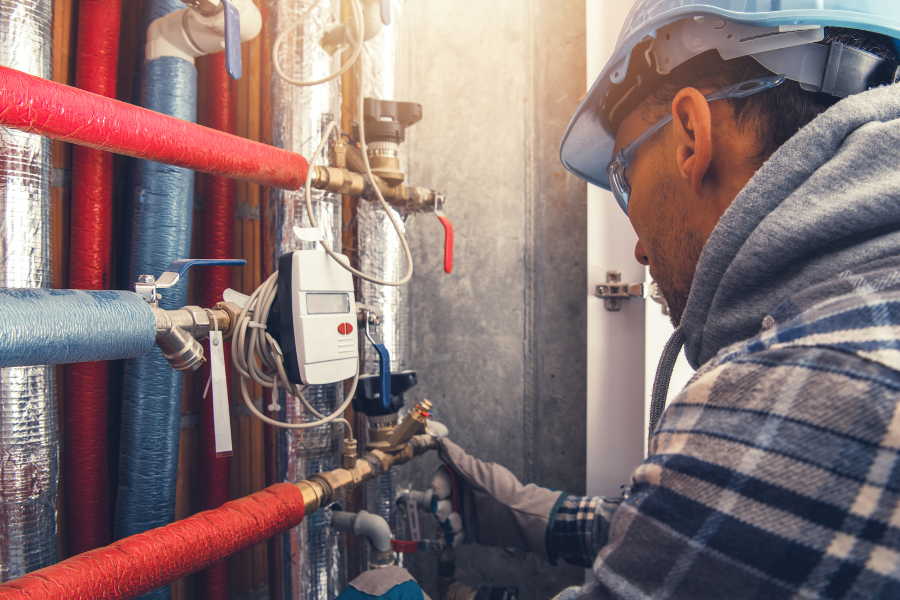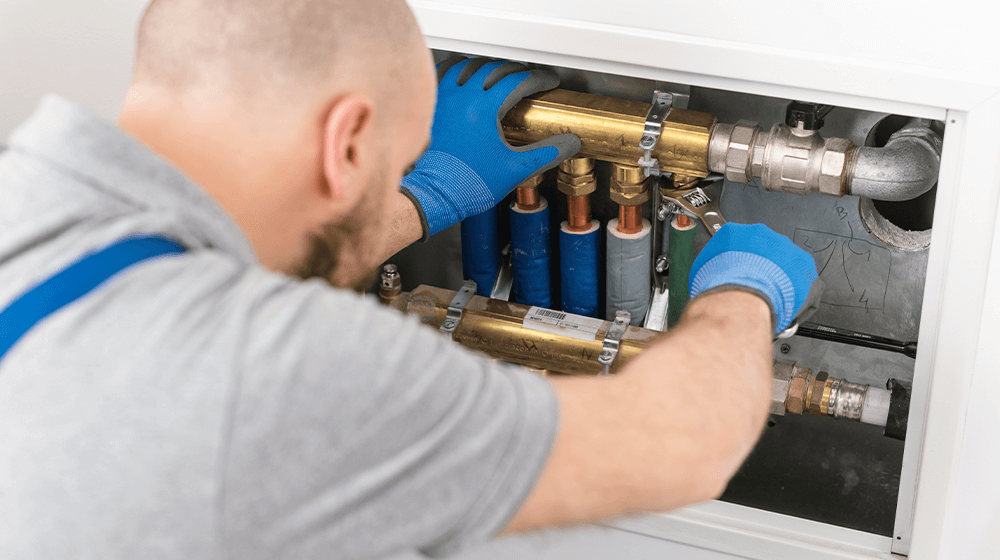Were you in search of advice about The Future of Plumbing: Trends and Innovations to Watch?

Intro
The pipes industry is undergoing a transformative phase driven by technical improvements and expanding issues for sustainability and efficiency. This article discovers emerging fads and innovations forming the future of pipes.
Governing Landscape
Governing frameworks play an essential function in shaping the adoption of pipes developments, with standards and codes controling everything from water performance to product safety. As innovations continue to evolve, regulatory bodies should adapt to make certain consumer defense and environmental stewardship.
Future Expectation
The future of plumbing is identified by proceeded advancement and combination with various other industries such as IoT, renewable energy, and structure automation. By embracing sustainable methods, leveraging emerging innovations, and prioritizing user-centric style, the pipes market is poised to resolve the developing requirements of society while minimizing its environmental impact.
Enhanced Reality in Pipes
Augmented Reality (AR) innovation is transforming pipes by supplying professionals with real-time visual advice for troubleshooting and repair service tasks. AR-enabled clever glasses or mobile applications overlay digital details onto the physical setting, helping plumbing technicians visualize pipe formats, determine concealed leakages, and carry out repairs with accuracy.
Effect of 3D Printing
The development of 3D printing has presented new opportunities in manufacturing plumbing elements. From custom-made fixtures to intricate pipe installations, 3D printing enables fast prototyping and on-demand production, lowering lead times and allowing higher personalization in plumbing layout.
Health And Wellness Features
In feedback to increased concerns for health and wellness, plumbing fixtures are incorporating functions such as antimicrobial surfaces, touchless operation, and self-cleaning systems. These innovations not just boost hygiene however additionally advertise user convenience and ease.
Hygiene-focused Fixtures
Touchless taps, self-sanitizing toilets, and antimicrobial surface areas are coming to be increasingly prevalent in property and commercial setups, decreasing the risk of bacterium transmission and promoting a cleaner, healthier setting.
Water High Quality Monitoring
Developments in water high quality tracking modern technologies enable property owners to keep track of the pureness and security of their water system in real-time. Smart water high quality sensing units can identify contaminants, pH levels, and temperature level variants, equipping customers to take proactive procedures to ensure water safety and security.
Remote Pipes Providers
Remote diagnostics and virtual assistance are changing the means plumbing services are supplied. With video conferencing and remote gain access to modern technologies, plumbing technicians can troubleshoot issues, supply advice for DIY repair services, and also execute remote inspections, using better availability and benefit to house owners.
Difficulties and Opportunities
While pipes innovations hold tremendous promise, they likewise present challenges such as data personal privacy concerns, regulative conformity, and the demand for workforce training. Addressing these difficulties requires partnership between sector stakeholders and regulative bodies to make sure safe and accountable execution of brand-new technologies.
Smart Plumbing Solutions
Integrating smart innovation into pipes systems enables remote tracking, leakage discovery, and automated maintenance. Smart sensors and IoT (Net of Things) devices permit house owners and plumbing technicians to check water use and discover issues in real-time, bring about a lot more efficient source monitoring and proactive maintenance.
Water Performance Solutions
With increasing emphasis on water conservation, innovative solutions are being established to reduce water wastefulness in pipes systems. High-efficiency components, greywater recycling systems, and clever watering controllers are amongst the innovations assisting customers lower their water impact while maintaining convenience and convenience.
Sustainable Materials
The change towards sustainability extends to pipes materials, with an expanding choice for environmentally friendly choices. Biodegradable piping materials, such as PEX (cross-linked polyethylene) and HDPE (high-density polyethylene), deal sturdiness and resistance to deterioration without endangering ecological honesty.
Predictive Upkeep
Predictive maintenance techniques take advantage of information analytics and artificial intelligence formulas to anticipate and protect against pipes concerns before they happen. By examining historical information and performance metrics, anticipating upkeep formulas can recognize patterns and anomalies, making it possible for positive interventions to prevent pricey repair services and disturbances.
Verdict
Finally, the future of pipes is specified by a convergence of technology, sustainability, and user-centric design. By embracing smart remedies, sustainable materials, and aggressive upkeep techniques, the plumbing sector can boost performance, promote safety, and contribute to an extra lasting future.
The Future of Plumbing: Trends and Innovations to Watch
Introduction to Future Plumbing Trends
The future of plumbing is being shaped by several key factors, including technological advancements, environmental concerns, and changing consumer expectations. These factors are driving the development of new products, services, and practices that enhance the efficiency, sustainability, and convenience of plumbing systems.
Key Trends and Innovations in Plumbing
Smart Plumbing Systems: The integration of smart technology into plumbing systems is transforming the way we manage water usage and detect issues. Smart leak detectors, automated water shut-off valves, and smart faucets are just a few examples of how technology is enhancing plumbing systems. These devices provide real-time data and remote control capabilities, allowing homeowners to monitor and manage their water usage more effectively. Water Conservation and Efficiency: With increasing concerns about water scarcity, there is a growing emphasis on water conservation and efficiency. Innovations such as low-flow fixtures, greywater recycling systems, and rainwater harvesting are becoming more popular. Plumbers are adopting these technologies to help customers reduce their water consumption and save on utility bills. Sustainable Materials: The use of sustainable materials in plumbing systems is gaining traction. This includes the adoption of recyclable and biodegradable materials, as well as the use of non-toxic and eco-friendly products. Sustainable materials help reduce the environmental impact of plumbing systems and promote long-term sustainability. Energy-Efficient Water Heaters: Advances in water heating technology are leading to the development of more energy-efficient systems. Tankless water heaters, solar water heaters, and heat pump water heaters are becoming more prevalent. These systems offer significant energy savings and reduce the carbon footprint of homes and businesses. Trenchless Technology: Trenchless technology is revolutionizing the way plumbing repairs and installations are conducted. This method allows for the repair or replacement of pipes without extensive excavation, minimizing disruption and reducing costs. Techniques such as pipe bursting and cured-in-place pipe (CIPP) lining are gaining popularity. Health and Safety: The focus on health and safety is driving innovations in plumbing systems. Touchless faucets and fixtures, antimicrobial materials, and improved water filtration systems are being developed to enhance hygiene and protect public health. Plumbers are adopting these innovations to meet the growing demand for safer and healthier plumbing solutions. Remote Diagnostics and Monitoring: The ability to diagnose and monitor plumbing systems remotely is becoming increasingly important. Remote diagnostic tools and sensors allow plumbers to identify issues and perform maintenance without the need for on-site visits. This enhances efficiency and reduces the need for costly emergency repairs. Impact of Future Trends on the Plumbing Industry
Enhanced Efficiency: The adoption of smart technology and energy-efficient systems will enhance the efficiency of plumbing systems. This will lead to reduced water and energy consumption, lower utility bills, and improved performance. Sustainability: The focus on sustainability will drive the development and adoption of eco-friendly plumbing solutions. This will contribute to the conservation of natural resources, reduction of waste, and protection of the environment. Improved Customer Experience: The integration of technology and innovative solutions will improve the customer experience. Homeowners will have greater control over their plumbing systems, access to real-time data, and the ability to manage their water usage more effectively. Increased Demand for Skilled Plumbers: The adoption of new technologies and materials will require plumbers to acquire new skills and expertise. There will be an increased demand for skilled plumbers who are knowledgeable about the latest trends and innovations. Cost Savings: The use of efficient and sustainable plumbing solutions will result in cost savings for both homeowners and businesses. Reduced water and energy consumption, lower maintenance costs, and fewer emergency repairs will contribute to overall affordability. Preparing for the Future of Plumbing
Stay Informed: Keep up-to-date with the latest trends and innovations in the plumbing industry. Attend industry conferences, participate in training programs, and engage with manufacturers to stay informed. Invest in Training: Ensure that you and your team are trained in the latest technologies and installation techniques. This will enable you to offer cutting-edge solutions to your customers and stay competitive in the market. Promote Sustainable Solutions: Highlight the benefits of eco-friendly and energy-efficient plumbing solutions to your customers. Educate them about the advantages of adopting sustainable practices and products. Leverage Technology: Embrace smart technology and remote diagnostic tools to enhance your services. Offer remote monitoring and maintenance options to provide added convenience and value to your customers. Collaborate with Manufacturers: Partner with manufacturers of innovative plumbing products to gain access to the latest solutions and technical support. This can also provide opportunities for joint marketing efforts. Focus on Customer Education: Educate your customers about the benefits and functionality of new plumbing technologies. Provide guidance on how to use smart systems and maintain sustainable plumbing solutions. Conclusion
The future of plumbing is being shaped by exciting trends and innovations that promise to enhance efficiency, sustainability, and convenience. By staying informed and embracing these changes, plumbers can provide superior services to their customers and contribute to a more sustainable future. The adoption of smart technology, sustainable materials, and energy-efficient systems will drive the evolution of the plumbing industry, creating new opportunities and challenges. By preparing for the future, plumbers can ensure their success in a rapidly changing market.

I'm certainly very occupied with and I am assuming you liked my article. Appreciated our post? Please share it. Help another person find it. Thank you for your time. Return soon.
Call Today